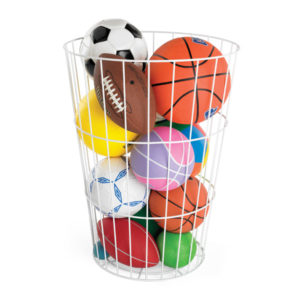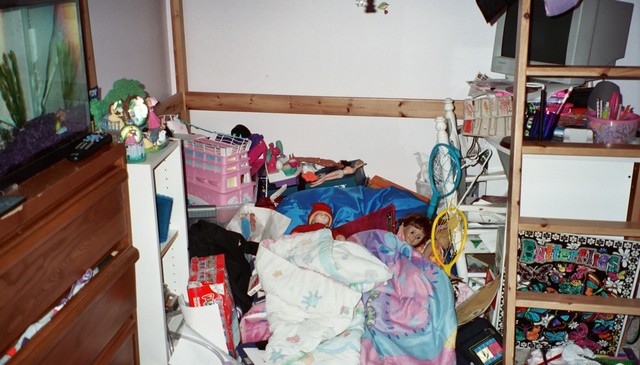 Do you cringe when you walk into your kids’ messy bedrooms? Does your family room resemble a disaster zone toy store? Well, believe it or not, it doesn’t have to be that way! Organizing toys is fairly easy – teaching the kids how to keep them organized is the hard part.
Do you cringe when you walk into your kids’ messy bedrooms? Does your family room resemble a disaster zone toy store? Well, believe it or not, it doesn’t have to be that way! Organizing toys is fairly easy – teaching the kids how to keep them organized is the hard part.
Additionally, I bet you’re feeling even more overwhelmed now that Santa or the Mensch on a Bench has come and left many fun toys behind for your little ones to enjoy. But they already had enough toys before Christmas, Hanukkah, and all of the other special holidays, didn’t they?
I highly recommend involving your kids in the organizing process as much as they can, depending on their age. If they are involved, they will have more buy-in for the end result and maintaining the newly organized spaces. If you don’t involve them, they may resent your efforts, or the system may not work that well for them because their personalities and preferences were not considered.
The Process
Let’s take a look at how to tame all those toys. There is a basic process I follow for almost all organizing projects.
Assessment – Assess what’s working and what’s not working. I know you probably think NOTHING is working! However, if you look around, you may just see a few systems in place that do work for you and your kids. Make note of these key points so you can circle back to them later.
Goals – Determine what your goals are for the area where the kids play with their toys. Do you want everything to be put away and/or can some things be in plain sight? Do you want your kids to put away their toys daily, weekly?
Sort – Sort like items into labeled boxes or bags. Use sorting categories that make sense to your children and the way they play with their toys. You’ll also need sorting boxes for donations, recycling, garbage and items that go somewhere else in the house. Donate, recycle or toss if there are broken or missing parts, it has been more than a year since you have seen it or used it or the kids have outgrown the toy. Below are some examples of toy categories:
- Puzzles
- Books
- Action figures
- LEGO bricks
- Dress up
- Musical toys
- Cars
- Dolls
- Video games
Zones – Now that you’ve sorted things out, you will need to determine where the kids like to play with the various toys so you can make new homes for them in those areas. Reference back to your assessment and see if you can utilize something that was working well before. I like to keep items close to where people naturally use them because this facilitates using them and putting them away. Some examples of this are crafts in the kitchen, books in the bedroom, big toys in the basement or outside and board and video games in the family room. Next, you’ll need to move your sorted boxes to the zones you have assigned.
Containerize – This is the fun part you’ve been waiting for! I bet you didn’t know there was so much that happens BEFORE the container part. Here’s my checklist of container ideas:
- Keep it simple
- Easy Access – Low & light!
- Motor problems? – Easy open containers, handles
- Label everything – Can’t read? Use pictures!
- Baskets are great for holding small items so they won’t fall over or roll away
Containers!
Here are some fabulous container ideas to get your juices flowing!
Customizable storage from IKEA
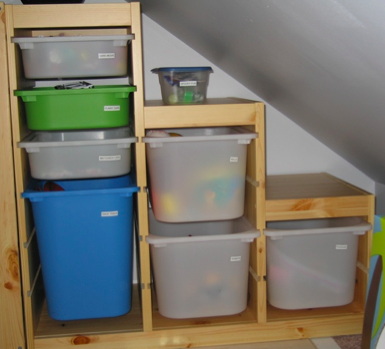
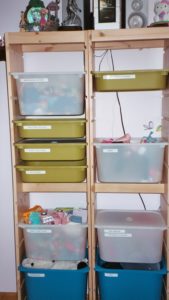
Craft Supplies
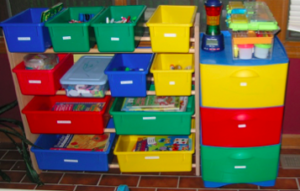
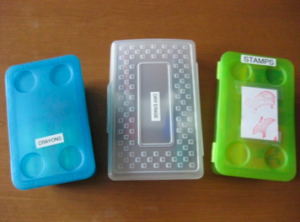
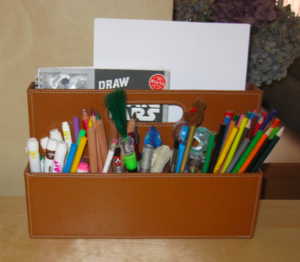
Excellent for keeping paper and drawing supplies handy.
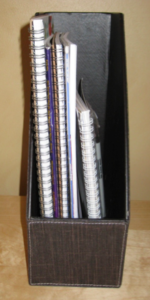
Magazine files work well for coloring books and construction paper.
Lego sets
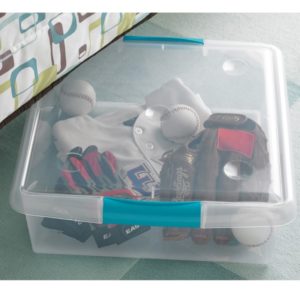
LEGO sets are a challenge to organize. I suggest not overthinking this. Typically, the kids don’t really care if their LEGO sets are sorted in some meaningful way. If the bricks are not kits or are kits that are now taken apart, I suggest shallow containers that make it easier to sift through to find a specific size or shape of brick.
Video games and DVDs
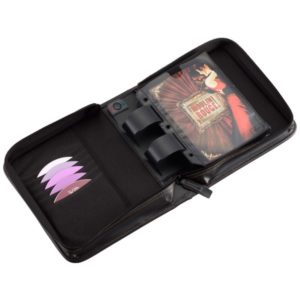
Stuffed animals or big blocks
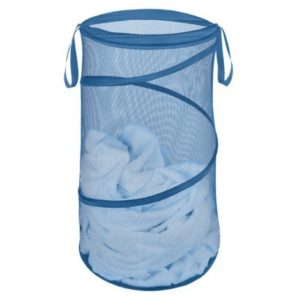
Balls
That’s the basic process!
Mine, Mine, Mine!
I know one of the more challenging parts of the process will be helping your kids let go of some of their toys. As parents, it’s our job to teach them that less is more. We must lead by example. If they see you regularly donating unused or unloved things rather than stockpiling them in the basement, they will learn to let go. Here’s a few more ideas on letting go:
- Purge regularly – I suggest before birthdays and holidays because the thought of new toys coming soon may ease the pain of letting go
- Reduce what comes in – Recommend to family to give experiential gifts or money that will go into a college fund over gift cards and trinkets
- Instill the one in, one out rule
- Rotate toys out periodically. When you bring them back it will feel like a holiday all over again!
- Honor collections by displaying them a few at a time because a hoard of stuff animals or Lego kits cannot be truly appreciated all at once
- Honor memories with simple and unique displays
Getting the kids involved in the purging process is essential. In my home, we talk about donating items we no long need or love to kids who need more toys, books or clothes. Believe it or not, this will resonate with most kids. You can also reward them for helping and/or purging, just don’t reward them with more toys!
Make it a Game
Making it all a game always helps! You can make it a competition and give each child a bag, set a timer and challenge them to fill the bag before the timer goes off. Another way to make the choices easier for kids is to have them play a game I adapted from a book1. I ask my son to sort his books into three groups:
- Best Friends
- Pals
- Strangers
Once they are sorted, the best friends stay in the room and get organized. The strangers get donated. The pals get rotated out and stored in the basement. If you don’t have storage space in the basement, you can put them on a high closet shelf or in a container under the bed.
Clean Your Room!
Now that everything is organized, how do we keep it that way? We, as parents, need to say more than, “Go clean your room!” Kids don’t always have the skills to visualize what picking up and cleaning a room means. We need to teach them what it means for a room to be organized and picked up. A few ideas I like are:
- Be clear about how frequently you expect toys to be put away
- Make putting away toys a part of their chore chart
- Provide them a step-by-step task list or provide them with picture visuals of the steps, which may work better than words and will teach them the valuable skill of visualizing project steps
- Hang a photo or two of the “clean room”
“Clean”
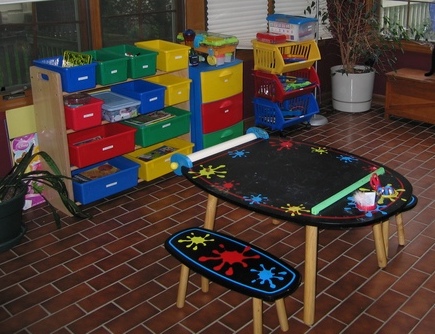
Remember this disaster room?
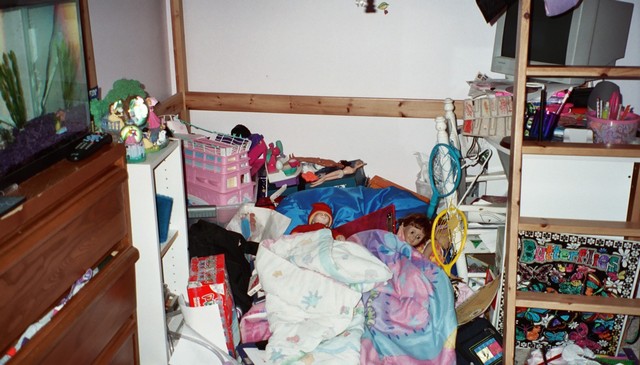
Feel Better?
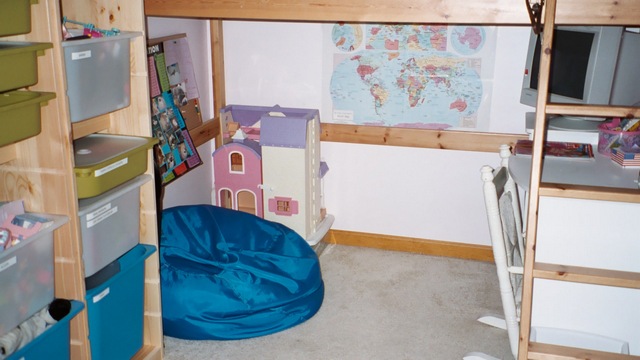
What’s your biggest toy organization challenge?
 Guest post by Jamie Martin founder of Destination Organization. Jamie specializes in helping overcommitted families find peace and relaxation through organization. She also enjoys working with serial entrepreneurs to reduce their stress and improve their productivity.
Guest post by Jamie Martin founder of Destination Organization. Jamie specializes in helping overcommitted families find peace and relaxation through organization. She also enjoys working with serial entrepreneurs to reduce their stress and improve their productivity.
